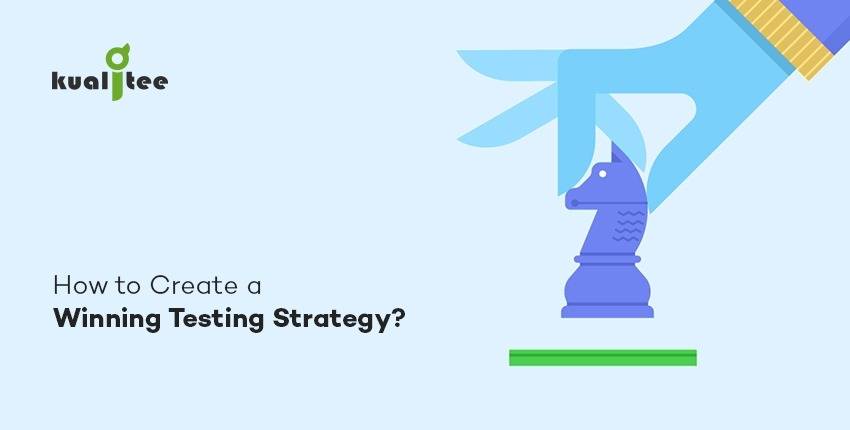The testing strategy is a high-level static, carefully-evaluated document that defines the testing approach, sets goals, and paves the direction on how to achieve the objectives.
It is created by the Project Manager who derives it from the Business Requirement Specification (BRS) criteria. While Test Plan is branched out through the Test Strategy, there lies a great difference between these two.
Why is the Testing Strategy Different from Test Plan?
In test plan, simply the test focus and resource management are defined such as test schedules, executions, what features should be tested and what not. While test strategy is a whole guidebook that focuses on achieving the fixed objectives through the predefined execution of test practices. It helps to predict unseen risks, defines contingency plans, chooses automation tools, and decides a suitable test environment for the particular testing lifecycle.
What if a Test Strategy is not created?
We are living in a decade where minutes cannot be compromised and everything is checked at micro, rather a nano levels. With technologies like Agile and DevSecOps, it has become obligatory to pre-define approaches and goals because there is no way back to obsolete testing patterns.
Nowadays, Agile companies are tackling and scheduling time and money constraints by creating comprehensive testing strategies. Besides, this genius strategy also helps in the mitigation of unforeseen threats and risks in the product.
It is unfortunate that some firms are still relying only on test plans alone during the software testing cycle for their application.
According to McKinsey Global Survey, the financial fiasco in 2008 entailed a trail of weak and forced strategies, but surprisingly in 2017, around 56% companies created strategies more frequently.
Still, it is not too late to decide a winning testing strategy. Just follow on the listed below fundamental components to create an ideal testing strategy:
-
Define Project Overview and Testing Objectives
It is a sure-shot thing that when you have the vision to achieve something, you instantaneously make ways to make it a reality. A pre-defined testing document provides a deliberate project overview that logically highlights the reasoning and expected outputs in the end. An attested testing approach and already set testing objectives will proportionally save your time and cost.
Objectives may include re-using test cases in the regression testing cycles, making a number of bug reports, understanding user and client expectations, and much more. The decision-making at the right time can add great value and quality to your product’s standard.
-
An Aligned Testing Approach
An idea or an approach is crucially important for running a testing lifecycle. To get the required results, a project manager with the help of its team should align a collective testing approach parallel to the software development project’s technicalities and demands. The approach can be based on particular business requirements or about a report on the backlog of bugs.
The testing approach might have elements and questions like how many times a certain testing type should be executed? What step are involved? etc.
Also, remember that methodologies differ with the techniques your team uses like Agile and Waterfall.
-
Set a Testing Scope
After defining a testing approach, there comes another important step in testing strategy. You have to cross check if the methodologies and techniques that you have chosen meets the testing scope or not?
Considerably, look at pros and cons of the selected resources and tools. It will decide the testing scope of your product in the market.
A testing scope decides which phase requires what testing practice, e.g. bug management, manual testing by the end of automation testing, defect trends, monitoring data integrity through integrated interfaces, etc.
Avoid any fallacies or irrational assumptions and check what’s in the scope of testing!
-
Test Environment Requirements
The best part of a testing strategy is you can change the testing scope and re-design it according to the test environment requirement. Defining a test environment requirement entails a successful testing lifecycle story. Checking upon root level details can ultimately create a desired infrastructure of your testing strategy.
-
Test Plan and Utilities
The test plan involves every nitty gritty about testing schedules, these schedules are aligned along with different test phases. This helps in resource and utility management and already saves a string of minutes for the whole testing team.
Though the test plan varies from project to project and company to company, it still can be adjusted correspondingly.
So, are you ready to create an award-winning testing strategy for your next software testing project?


























